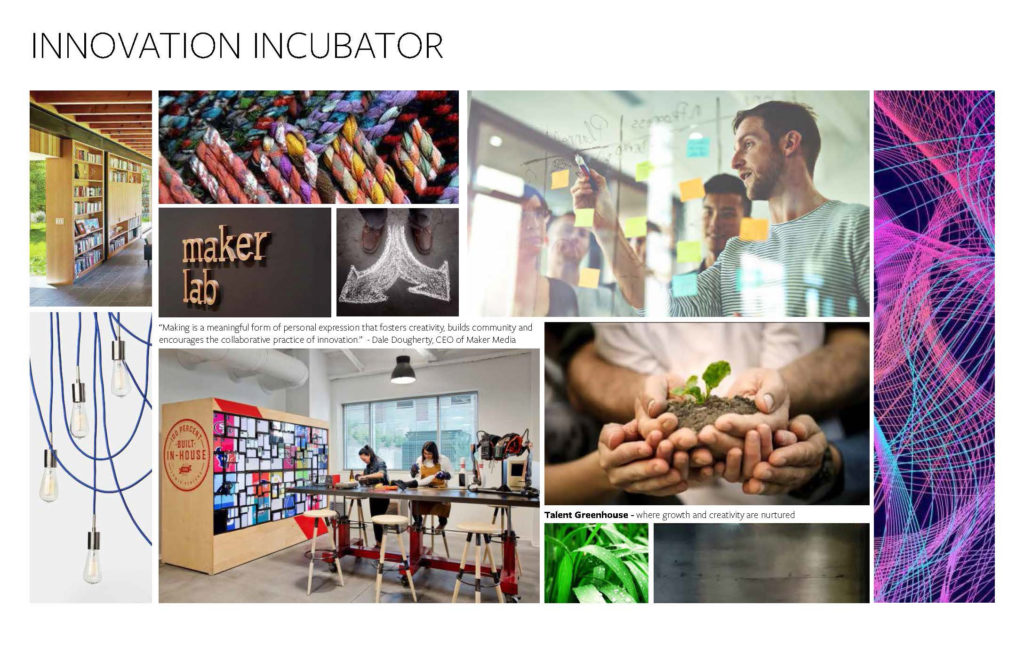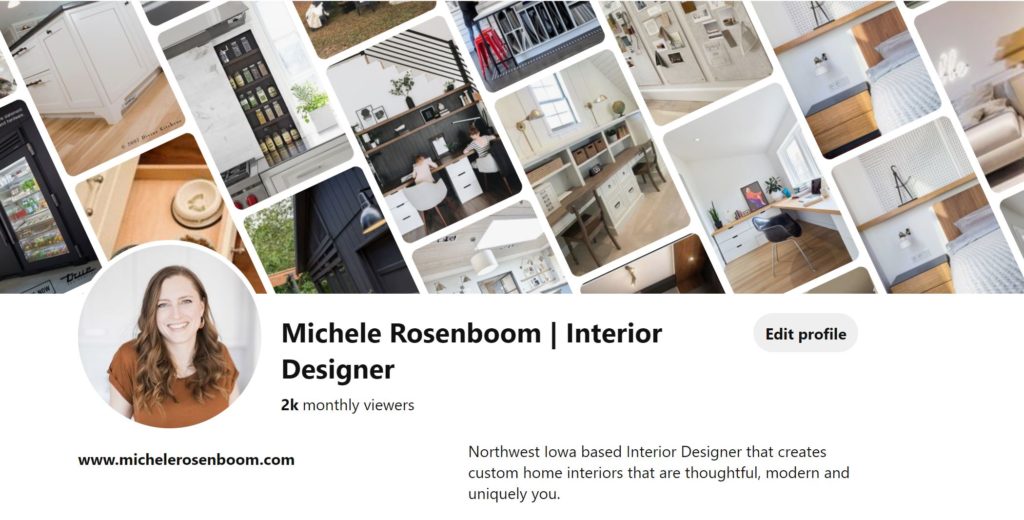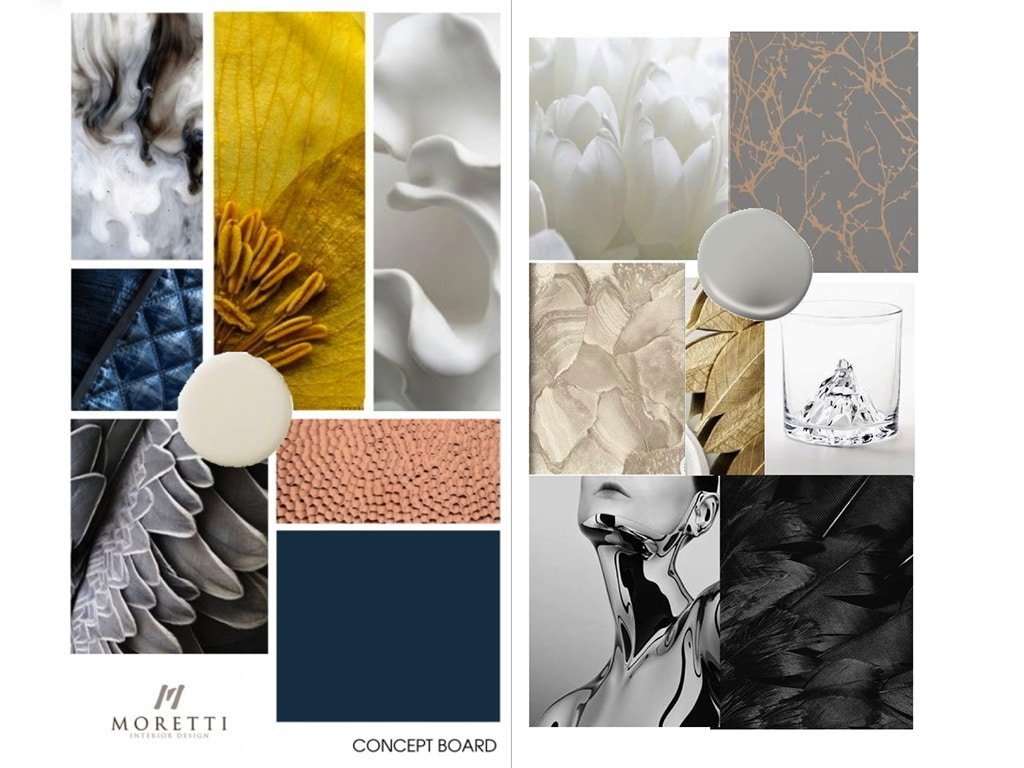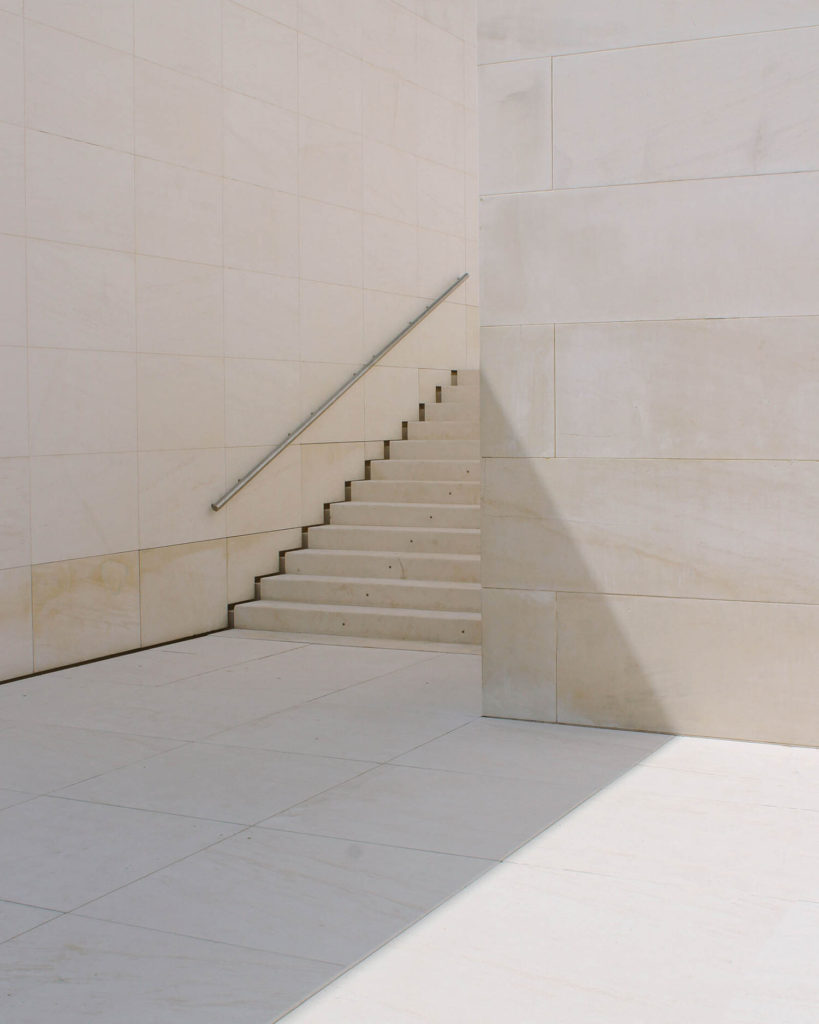Since I’ve started working in residential design, one of the things that I’ve noticed that’s different from commercial design is the use and role of inspiration.
When I was designing schools and offices, most of my clients weren’t spending their evenings pinning inspiration images for their project. Sometimes, they had an idea of what they were looking for, but for the most part, those clients looked to the design team to advise them on what their project should look and feel like.

Links to more of my commercial work
Inspiration images seem to be used differently in residential design. That’s understandable, given that we live in the world of Pinterest, which covers almost every possible inch of our creative lives. Don’t get me wrong, I love Pinterest, too! But as a designer, it’s not something I want to rely on for my inspiration because it’s where we find everything that’s already been done. It’s very tempting to skip our own creative process in an instant and that’s both the beauty and the danger of this plethora of visual imagery that we have access to constantly.

The Role of Inspiration isn’t to give us something to Replicate.
I love what Myquillin Smith says here:
“If I expect inspiration to lead me to create a replica, then I don’t truly understand the role of inspiration in my life. Inspiration is my responsibility. I go looking for it with purpose, and I hope to be open to any inspiration that comes my way... I don’t judge the designer who pays a million-ish dollars for a new coffee table or resent that person for having expensive taste I could never afford. That’s what happens when you are looking for things to copy instead of looking for inspiration. If I like something I can’t have, I can choose to be jealous, resentful, or judgy, but I would miss an opportunity. The alternative is to get excited about the inspiration the things I can’t have provides.“ Cozy Minimalist by Myquillin Smith
Images are a Tool
They help us communicate with one another about design. We can learn new things from them, but most importantly, they should be a springboard to spark a new idea, making it uniquely yours.
I think something that’s difficult for some people is remembering that when we’re looking for inspiration, it’s not final selection time, it’s exploration time. (Again, it’s tempting to skip ahead to the concrete…don’t do it!) These are two very different activities. Both are necessary and valuable parts of the creative process. I’ve been working on processes and systems over the past couple of months, in order to better guide clients through all steps of the design process. I don’t want you to miss out on some really valuable steps!
Images of finished spaces contain options for potential solutions, but not the “big idea” or concept that’s going to guide the design decisions for the entire project. Concept is an applied sensitivity and sophistication that comes through the finished design. Someone walking in may never know what inspired the design, but they can tell that something feels good there. That’s because each detail has been carefully thought out and considered within the construct of the concept.
Sources of Inspiration
The best inspiration is almost always found outside of the type of design I’m working on. If I’m designing an interior, my best inspiration is not coming from the interiors world. It could come from art, music, architecture, poetry, product design, something scientific even. I often find inspiration for color palettes in nature, art and textiles. Sometimes I’m inspired by broader ideas like “giving everyone a seat at the table”, which was an extension of the clients’ goals for their space. The key to inspiration is not to limit the possible sources – think outside the box. Inspiration is everywhere!
“Originality often consists in linking up ideas whose connection was not previously suspected.”
I’m often inspired by things that are symbolic of or related to something related to the project. For example, origami could be a source of inspiration for a client who wants crisp modern lines and little visual clutter. We could design the walls or horizontal built-in elements so that they appear to bend and fold. Maybe we incorporate fine layered textures in the textiles that look like folded paper or printed patterns that are linear / geometric. I could go on…
Here is another example of a concept board. This designer is using textures, colors, and objects to start to capture the feeling of the room. It’s establishing design direction.

Source
How to Analyze Inspiring Images
Gathering inspiration images is a helpful exercise, but hopefully you’re catching my drift that it’s not a means to the end. After I’ve done my exploring and gathering, I analyze what I’ve got. I start to look for commonalities and mentally weigh repeated concepts or features as “votes”. How many times does that appear in my collection? Is it a strong enough idea to stay? Does it help communicate the feeling I’m going for? Next, I sit down with my curated my collection of images and ask more questions. What’s working here? How did the designer create this feeling / atmosphere? Are there any elements that would make sense to incorporate into this new design I’m working on? What’s done well that I can learn from? Maybe it’s the layering of textures, the proportion of light to dark elements or quality of light.
If this all sounds daunting, don’t worry, this is my job. Concept development is one of my favorite parts of the design process! All that I normally need from my clients is the OK to keep developing the design in the direction that it’s heading. If you like the ideas I’m exploring, then I can begin taking the design to the next phase and start making selections.
Why does Inspiration matter?
Inspiration matters because it’s the spark that makes design enjoyable, because a space that’s been built without it can feel flat or confusing. Inspiration is the driving force behind the design. In other words, it steers the ship. Every decision is held up to the lens of the original concept for the project. (Does that item help or hinder what we’re trying to achieve?)
Inspiration also provides us with focus for the project, so that we aren’t distracted by ALL. THE. THINGS.
Do I think most people care about the role of inspiration when designing their house? Maybe not. However, I know most people care about the end result. If you want a well-designed home remember this: the role of inspiration is to provide a starting point that inspires us to create something that’s truly custom and original to you!


